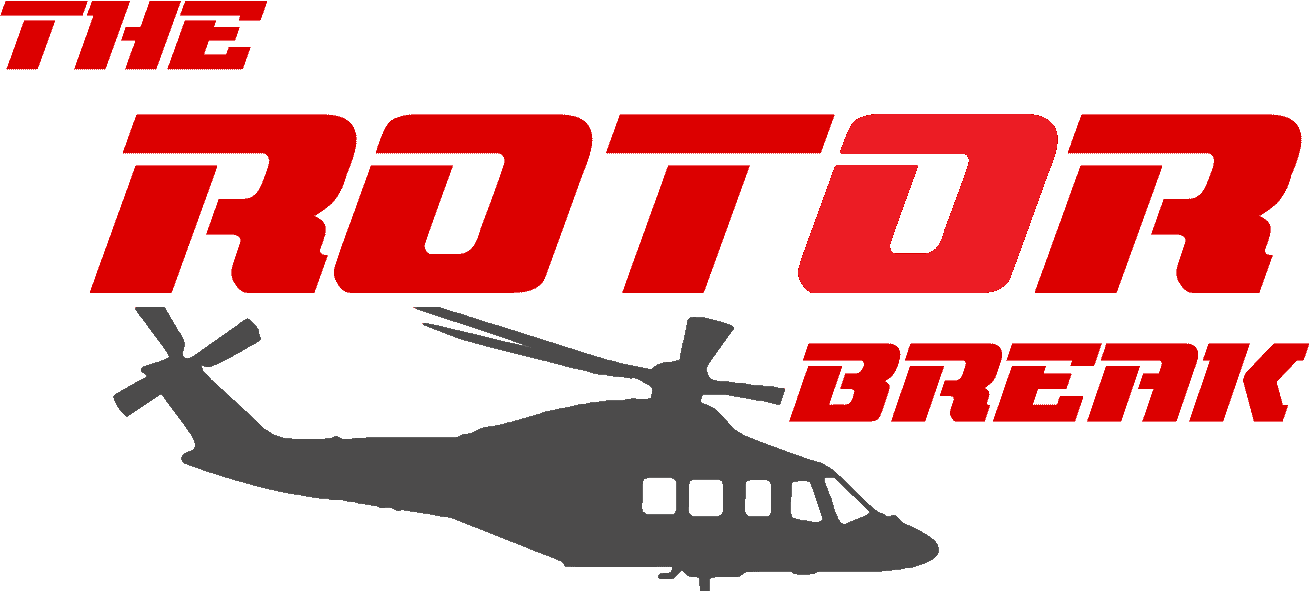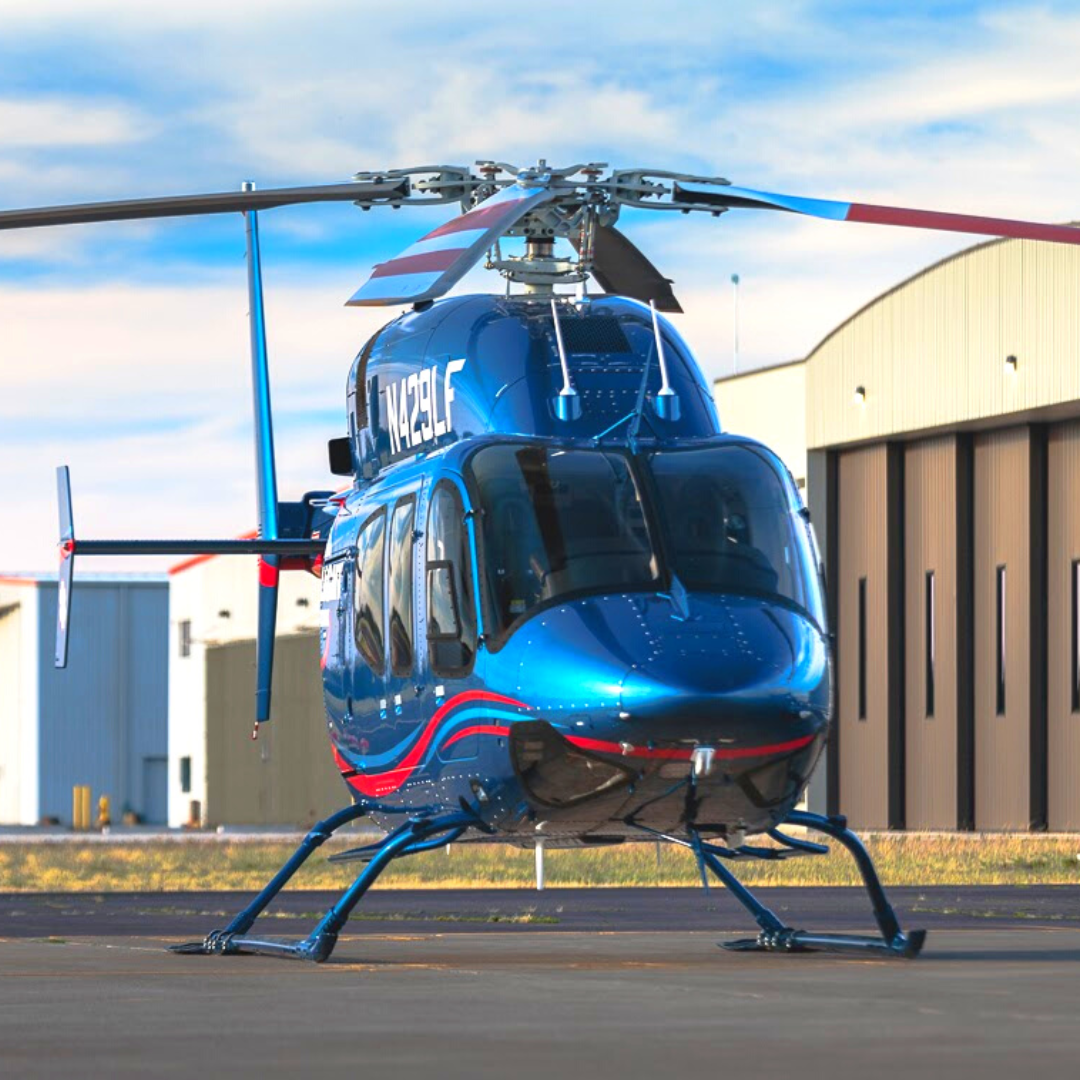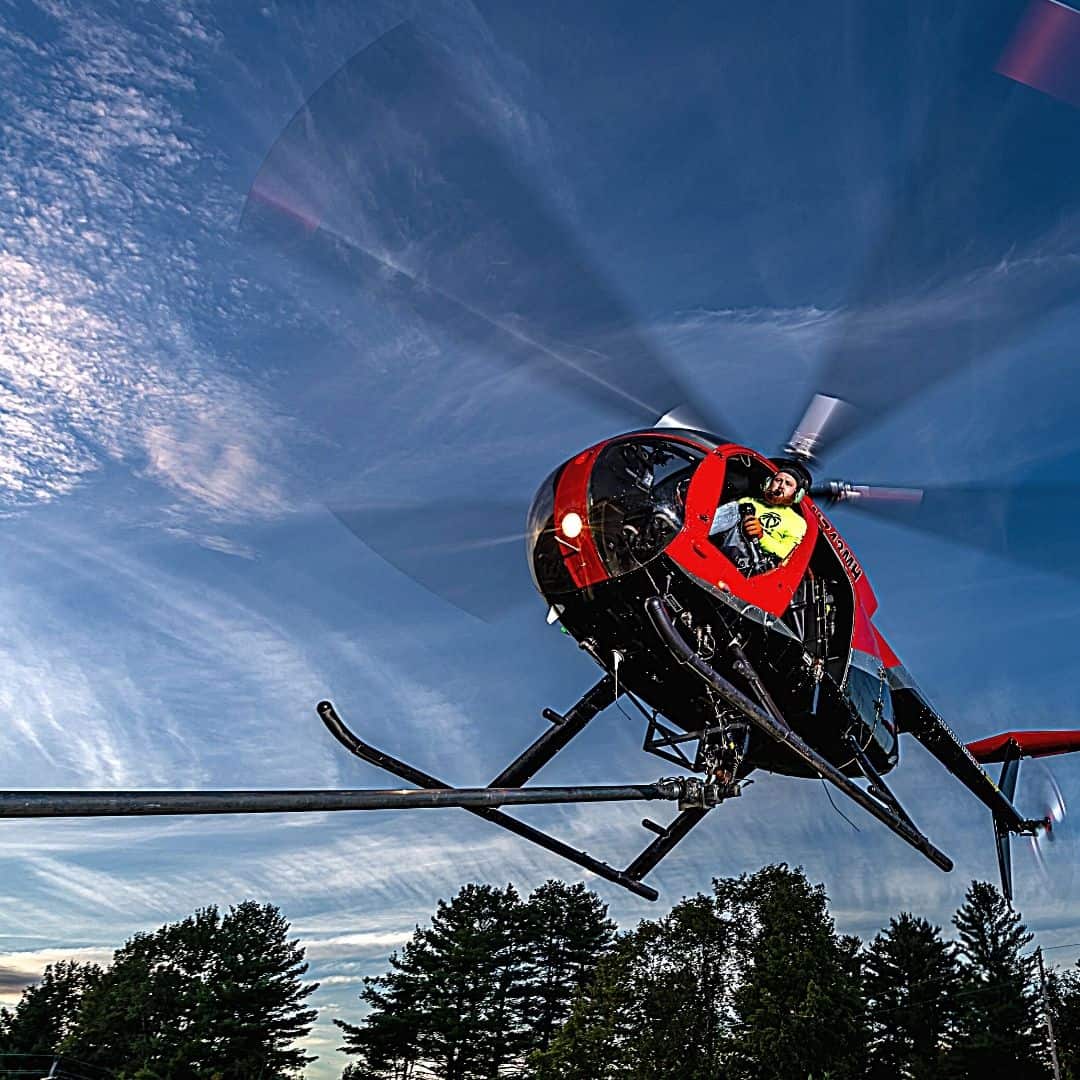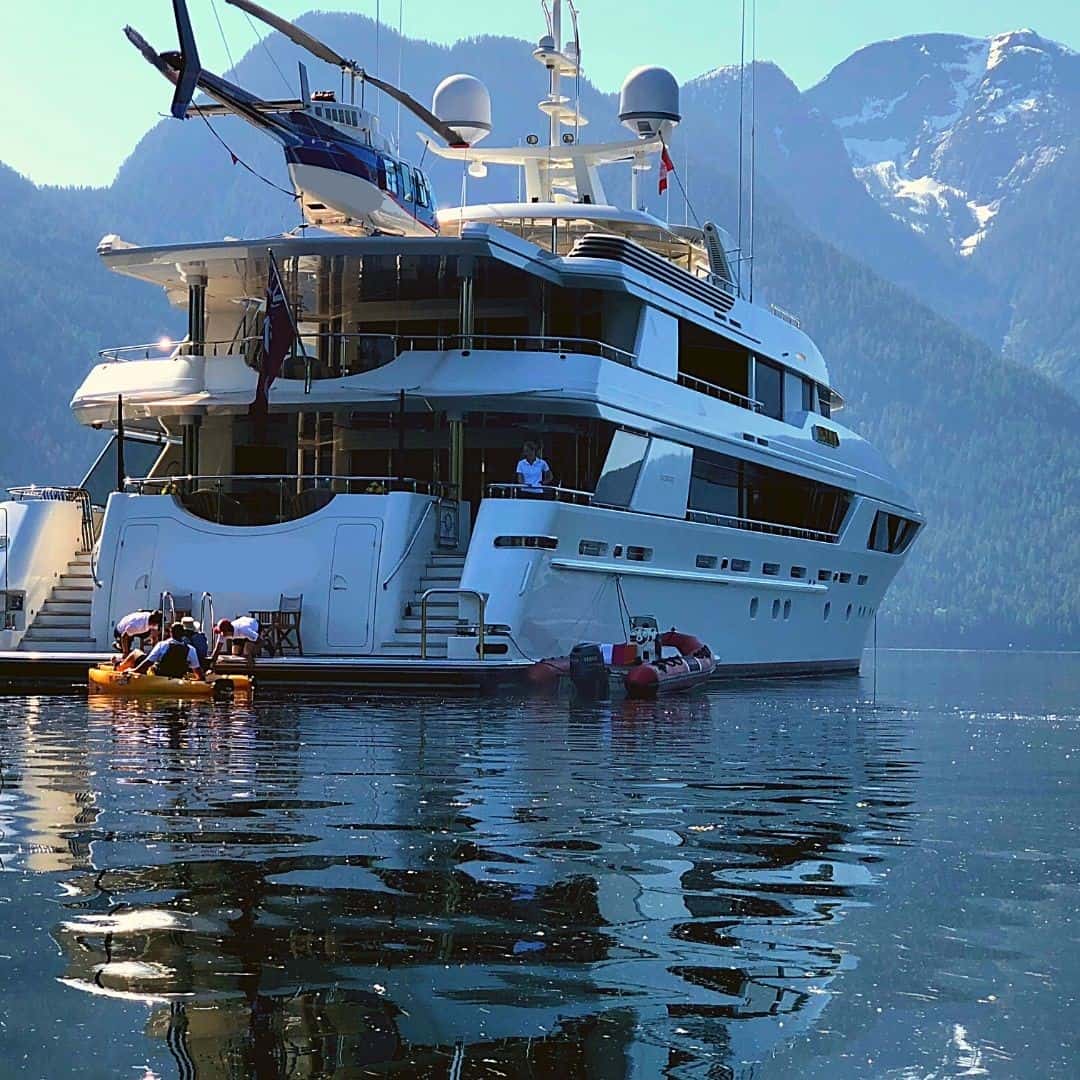by Darcy Hoover
Darcy Hoover has had quite the career and thankfully he’s willing to share it. If you’re an experienced helicopter pilot you’ll almost certainly be able to read his story and draw some parallels to your own.
If you’re a budding student pilot, however, this is a great place to draw some inspiration!
Read, Enjoy and Share
The Rotor Break
Bush pilot? EMS? Offshore? Overseas? What do you want to do? Where do you want to go with your career? Having done a fair bit of each, hopefully, I can offer a little insight to those wondering where they ought to be. The majority of my touring co-workers have followed a similar progression: bush pilot gravitates to EMS for more stability, then into the Offshore for more money, then to overseas touring for even higher salaries, or perhaps for the adventure. There is always the military route, something I looked into very early on, but there were no guarantees that I would spend the rest of the days flying helicopters. That was enough for me to pursue the commercial route. I’d say give everything a try and see for yourself.
Flying helicopters was the only thing I ever wanted to do. I drew helicopters endlessly as a kid. I read the Helicopter Pilots Handbook at twelve. Companies I had written for career advice offered free rides. Various manufactures sent all manner of marketing paraphernalia to this day-dreaming farm kid. I sat in a Super Stallion at an air show and pondered the purpose of the Chinese hat atop the cyclic, so off went a letter to the US Navy. My letter found its way to a colonel in charge of Naval research and development at the Pentagon. We became penpals, which eventually generated an invite to the Pentagon. My folks planned a trip to Washington DC and after a full day at the National Air and Space Museum, we arranged a meet. The Colonel presented a wood model of an A129 Mangusta that’s still on my desk today.


I eventually turned eighteen, my folks secured a loan, and I was soon learning to fly wood bladed Bell 47s out of Mount Hope airport in Ontario. My subsequent search for employment was frustrating, to say the least. I literally lived in the back of my folk’s Ford Escort for months, planning my fuel stops for the mornings so I could use gas station restrooms to wash up. I drove to every helicopter company East of Winnipeg and pleaded my case. No one was interested in a hundred-hour eighteen-year-old pilot.
One morning I was awoken by the owner of a small company banging on the window of the Escort, curious why I was sleeping in his base parking lot. He was impressed that I was living out of my car but didn’t need a pilot. Apparently there was a slump in the industry and even five thousand hour guys couldn’t find work, but he did need some drywall work done. I claimed to be an expert then drove to the nearest hardware store and asked how it was done. I did a lot of drywall. I washed and waxed the Boss’s truck, I washed and waxed his ATVs, I babysat his kids. I refueled the helicopters and drove parts all over the countryside. I moved out of my folks’ car and into a trailer behind the hangar.
Eventually, they needed a Bell 47 ferried back to base so that was my first bit of commercial flying. Then there was another and another. I started giving pad rides at fairs, then the odd photography or survey flight. My first real contract was flying exploration crews out of a tent camp, greasing all the Bell 47s bearings myself each evening, then fishing the James Bay watershed while the sunset. I was told my work ethic was appreciated and I got busier and busier. The only real drama I had that first year was my engine quit on a moose survey out of Wawa but I got it restarted on the way down. I was flying and happy. The company had a long term contract in Northern Quebec and they needed a part-time replacement, so I was checked out on the Jetranger and headed off in my folk’s beleaguered car for the twenty-hour drive.


Apparently I made an impression and they requested I stay on. I learned French and I met my future wife. Next, I’m landing on slippery railway ties with the blades precariously close to Northern Quebec granite, flying Hydro workers up and down the coast, joining coastal families for lobster and seal caught out behind their house. There was exploration of all sorts all over the North Country, dropping water on fires, moving countless drills into tiny confined areas. I logged over a thousand hours before I hit twenty years of age.


I loved bush flying. I started long lining and aerial construction jobs, setting towers on mountain tops, fighting forest fires all over the Eastern provinces, and hover drop-offs of survey teams or fire crews, sometimes with one skid on a rock, sometimes not, and more than once returning with green blade tips. There were so many treetop-to-treetop scud runs over mountain passes in the fog I shudder when I think about it. I dropped into confined areas waiting optimistically for the ground cushion, all of it with a worn map on my knee, a floating compass and my watch. Thirty minutes flying was the distance between my thumb and my forefinger on a sectional chart. I don’t think I ever had a directional gyro let alone a GPS. The technology didn’t exist yet. I also didn’t have a schedule.
After a few thousand hours, I tried the life of a contract pilot to better manage my time. I loved the flying, I loved the bush, I loved the fishing in remote waters and the stunning views, the massive moose shaking their racks at my noisy contraption, herds of caribou scattering every which way, but being away for most of the year was wearing thin.


I wanted to keep flying but wasn’t sure which direction to take. I wanted to be home more. I decided on University as surely an engineering degree would open some doors. I managed a semester a year while flying contract, and spent more time at home. I still wasn’t sure what the degree would lead to so I started researching IFR careers as well. I completed two full years of my degree when the boss called me to chase seals out of the Isles de Madeline as I had done each spring. I asked my employer if there was any need for me on one of the company’s IFR bases if I secured an IFR rating. He called back in an hour with an attractive offer: An IFR rating in return for two years on an EMS job they had trouble keeping crews on. Onto the next stage….


The IFR world was not what I expected. My first Captain on the two-crew “IFR” operations assured me that I would not be flying any IFR. Ever. I couldn’t even couple the autopilot as I’d forget how to fly, not that I’d be flying at all. With well over 3000 hours under my belt, I could put the gear up when requested, if I was quick enough. I couldn’t even talk on the radio as I’d probably screw that up too.
Transport Canada had just introduced the HAMRA and HARON exams, so I studied and wrote those. I became the only pilot on base with an ATP rating! We had no checklists and no SOPs. Apparently you weren’t thinking if you were following a checklist. It was a day/night VFR only operation. Soon enough the base required another Captain and I was upgraded. I started filing IFR. I started using the autopilot. I even got to use the radio! The Captain moved on to greener pastures and I became the base manager. We hired an ex-military pilot who had extensive knowledge of Standard Operating Procedures and checklists, so we set about recreating the operation into something more modern. Another experienced military pilot joined the crew and we honed things further. Crew Resource Management was a new term but an attractive option compared to the old school ways we had been following.
The IFR EMS market fit like a glove. You had the professionalism of IFR procedures and approaches, the twin-engine capability and all-weather day/night operations, but you still had confined areas and bush flying to contend with. I slept in my own bed every night, made friends, and had a life. Plus the flying was challenging and rewarding. You had to think on your feet; constantly planning fuel burns and route changes for higher priority calls, IFR and VFR weather limits for various phases of flights, and we were still using maps for the most part, but now we had an HSI! Most of the Northern communities had these dedicated helipads on the outskirts of the village; stone block pads that often cracked under our wheels’ weight, with a perimeter of reflective cones. There were no lights for miles. Approaches were to line up into the wind as best you could, swing the searchlight around until you found the cones floating in space, then start a descent. Maintaining the cones’ oval-shape was your glide path, with the co-pilot monitoring rates of descents and airspeed, often settling into white-out conditions in the middle of the night. It was the most challenging flying I had done to date. The crew camaraderie was dynamic, the work exciting. The short legs of the Bell 222 were eventually replaced with S76As, and our IFR capabilities grew in leaps and bounds. There were still the challenges of holding the S76’s rear wheel on a floating dock while medics unloaded and reloaded stretchers, there were still scud runs lake to lake to find a remote camp, but there were also ILS approaches into the major centers. It was good flying.
After a decade I wanted to try something else. I was offered a job flying the venerable S61 offshore in Eastern Canada. The pay was a significant improvement, as was the schedule. They sent me to Norway for my first exposure to a full-motion simulator. Sitting in a hot tub on the 11th floor of the Clarion hotel overlooking Stavanger harbor with a belly full of reindeer meat was quite a step up.
After some training and getting fully signed off, I taxied out on my first operational morning and could only count six runway lights ahead in the thick fog, the rain driving sideways in a gale. I picked up the big old girl full of oil workers and auxiliary fuel tanks, tilted over the nose and pulled pitch. We punched in at a hundred feet and bucked and rocked and we climbed through the grey turbulence with nothing beyond the windows. We didn’t have autopilots but we had a GPS! Things were improving. I banked and continued the climb offshore, the grey eventually brightening, the turbulence settling out. We punched out the top at 5000 feet into a spectacular crimson sky as the sun’s fiery brim peaked over the horizon. A hundred and seventy miles later we dropped back into the goo for my first rig approach. Limits in those days were 150’ rad alt while using radar to creep to 1/2 mile before turning and climbing away from the massive metal structure you were attempting to land on. At 150 feet we couldn’t see the sea below us. The huge auxiliary tanks in the S61 allowed nearly five hours of flying so we overshot and came around and tried again, and again, and again. On the last approach, a grey shape loomed out of the murk and we pushed closer. We flared and set down on the deck. Passengers in dry suits filed out and new ones filed on, fuel was pumped into the tanks, and we were off into the goo once again. An hour and a half later the airport reported 1/8th-mile visibility in fog and 100 feet ceilings, so we hand-flew the ILS down to minimums. Vmini in the S61 was 45 knots if I recall correctly, so in forty knots of wind, you got a good long look around minimums to get some visual with the runway environment. We landed and taxied clear. I found my home for the next decade.


Back in the day, day or night didn’t matter, and days were short in the Northern winters. Hand flying 600 hours a year became second nature, but the S61 is not a fan of ice. Many a stressful evening was spent checking the mirrors for ice some hundred miles offshore over the North Atlantic, pondering options if we started picking some up. Snowstorms required a scud run up a long valley then creep into the airport while fixed wings missed on the ILS. Eventually, the S61’s single-engine performance no longer met stringent oil company contract requirements, so we found ourselves flying 4-axis fully coupled, fully de-iced Super Pumas with modern FMSs. Stress was significantly reduced. I figured I could fly offshore for the rest of my days. The pay and schedule were great. The equipment was first-rate. The crews were professionals across the board. There was a trend towards more airline-like operations. CRM had become a science and safety-culture a religion. Operations manuals became thicker and thicker. Every time someone screwed up someone else wrote a plethora of complex rules to assure it didn’t happen again. The fun was slowly seeping out of aviation. The structure became daunting, and the pedantic rose through the ranks and took over. But alas, I am flexible and adapted, as did we all. Then the company lost the contract and crews were required for an operation in Turkey. I was off for some International touring!


I had been instructing on the Norway simulator a fair bit and had covered for a few weeks in Azerbaijan, so I wasn’t a complete newbie to being overseas. I was tasked with not only being a Puma training pilot but also managing the overseas operation. I studied Turkish and management books, but admittedly I was over my head on that first job. Biting off more than I could chew had always worked before, so I toughened up as best I could and dug in. I spent the next decade exploring the Middle East, Africa, and South America, learning new cultures, living in posh hotels and resorts, and racking up massive travel miles. There is frustration dealing with some cultures and bureaucracies, but I wouldn’t trade any of it for anything. Safety was never a concern. I discovered early on that 99.9% of the things we worry about never come to fruition, so I lived the best life I could and powered through.


There were some scary riots in Mombasa and Southern Tanzania, I was there when a co-worker was sandwiched between two massive policemen in the back of an SUV in Gabon, under arrest for some offense, I was detained by AK47 wielding youth in Benin, and I can still smell the worse bathroom one could imagine in Ethiopia if I close my eyes, but overall, I loved touring overseas. The money was good. The schedule involved being away from home for long periods but you also had an equal amount of time at home. The rewards of traveling became rather addictive. Then they needed a Search & Rescue pilot…..so off I went to something new yet again.


All in all, utility work offers the most rewarding flying. I often miss the simplicity. It’s you and you alone. Thinking on your feet and handling skills are paramount. There are guys that have taken long lining to the level of art. The IFR EMS market is definitely the first choice for being at home on a steady schedule. Saving lives will always be a rewarding career. I loved the ever-changing flight planning and mix of IFR and VFR skills required to do the job. No longer your own boss, you do have to share the cockpit with someone you may or may not agree with, but modern standard operating procedures have taken most personality out of the cockpit, for better or worse. Modern two-crew dynamics is a powerful safety tool, and for the most part, having someone to chat with is a bonus. You will make some life-long friends. If financial gain is the desire, the offshore market on the heavies is an attractive route, but the flying is admittedly quite boring. Flying takes a back seat to a steady income. Your dream becomes a job. Uncomfortable dry suits, very strict operating procedures, often the same route day after day after day, long distances out over the North Atlantic in bad weather, could be seen as rewarding, or soul-sucking. It depends entirely on the individual. International touring comes and goes with the oil market (unless you can score some overseas utility work) but for the adventurous, the rewards are unlike anything I could imagine while reading the Helicopter Pilots Handbook so many, many years ago. The world becomes very small when you are exposed to so much of it. Unless you confine yourself to the hotel and the base, the experience gained from living with other cultures provides a very satisfying and eye-opening life. Priorities realign.
I know guys who have gone fixed-wing when the market was poor. Some went into the family business or started selling insurance or real estate. For myself, I love flying helicopters. Nothing else interests me. Flying helicopters has provided a very rewarding career and I’m still at it, and fingers crossed, I’ll keep going. I recently heard from my original instructor; he’s still going strong into his 70s! I hope I’m as lucky. You want a satisfying career. You want to provide for your family. You want adventure but you want stability. You want a challenge but routine is nice too.
Sometimes you just want to watch the earth pass below your feet…
Darcy Hoover


Darcy Hoover


Darcy has spent over 30 years flying in over 30 countries. He is currently flying AW139’s in Trinidad and Tobago but somehow still managed to find time to write a novel, “The Helicopter Pilot” a fictional story of life in East Africa… which was featured in our “16 Best Books for Helicopter Pilots”
Click the link below to see it on Amazon.
Author: Darcy Hoover
International Helicopter Pilot and Author





